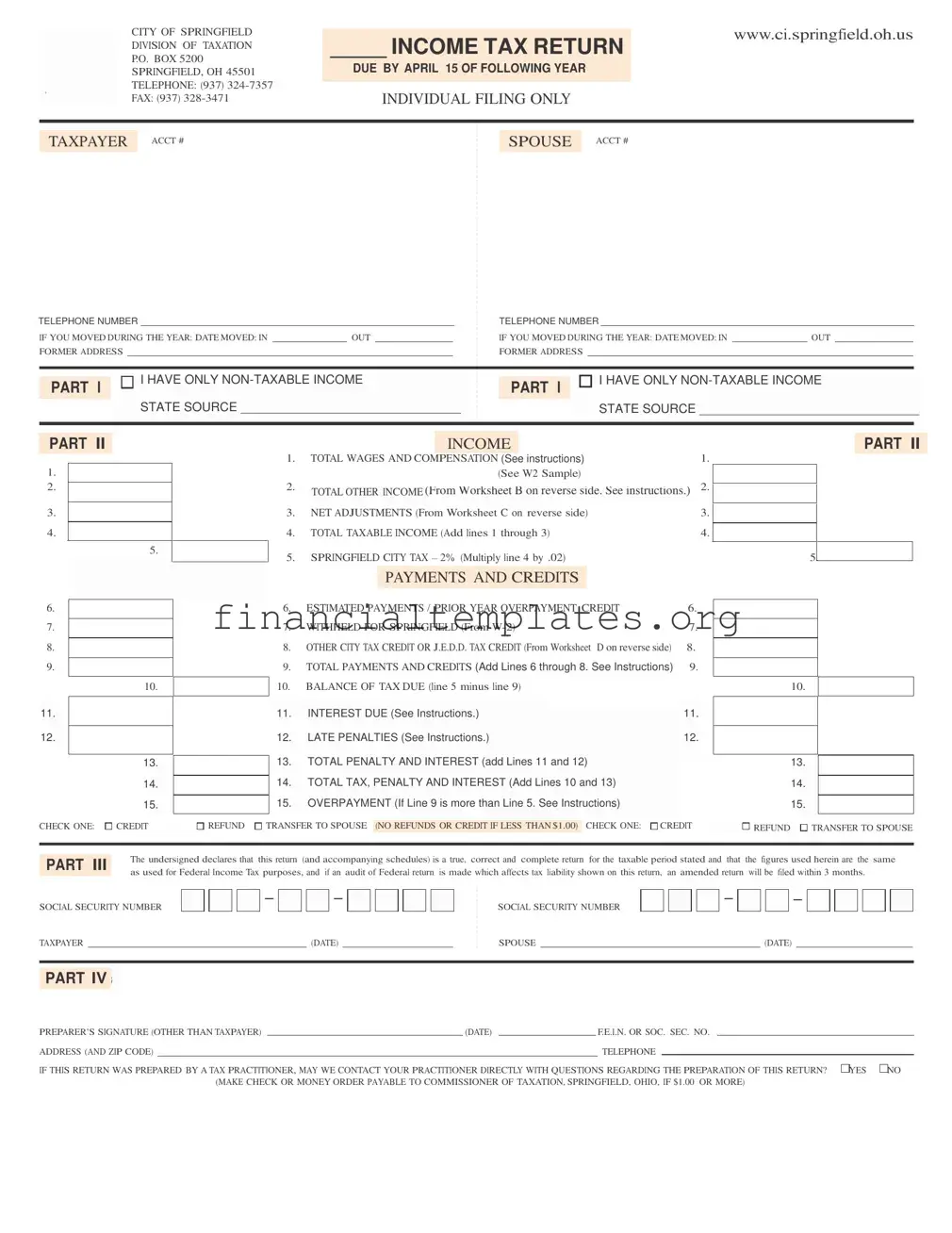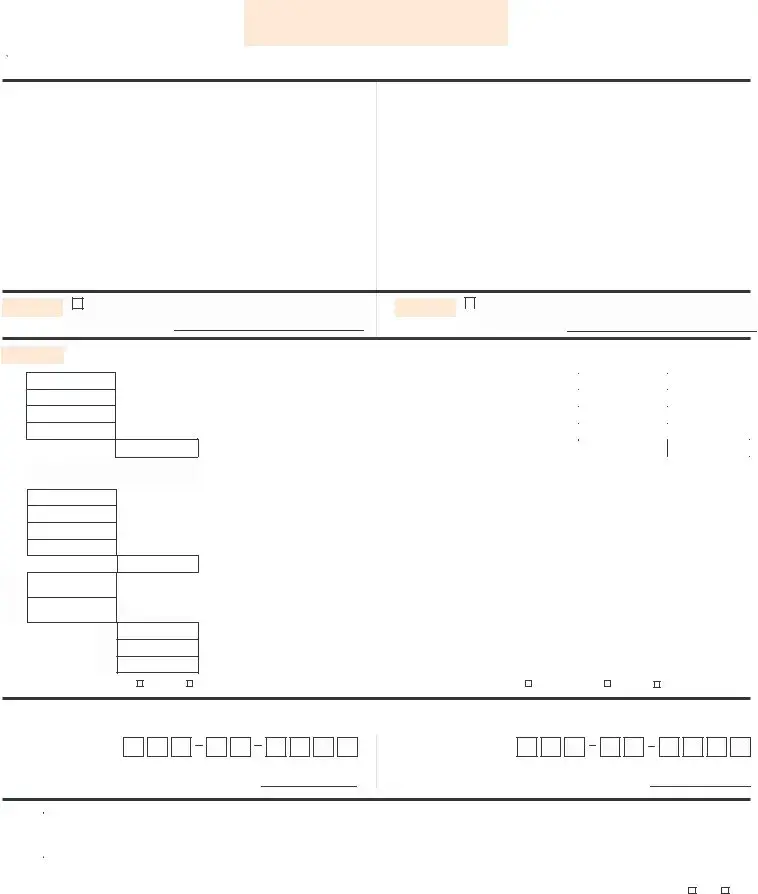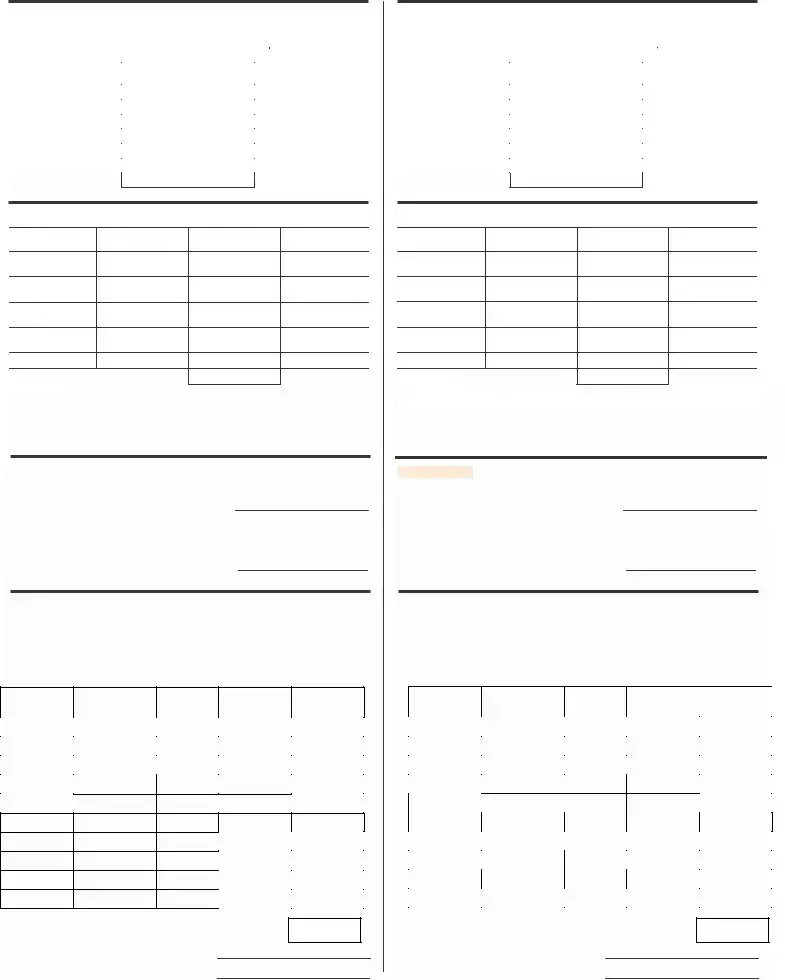The Income Tax Return form for the City of Springfield shares similarities with the Federal Income Tax Return Form, such as Form 1040. Both require the taxpayer to report income, calculate taxes owed, and identify any adjustments or credits that reduce tax liability. They mandate the inclusion of wages, compensation, and other income types, along with allowable deductions or tax credits that affect the final tax calculation. Essential in both is the declaration that the information provided is accurate, truthful, and complete, highlighting the consistency in legal accountability across tax reporting platforms.
Another document with significant resemblance is the State Income Tax Return Form that various states utilize. Like the Springfield form, these state forms often ask for income details, applicable deductions, credits, and tax payments already made through withholdings or estimated tax payments. Both sets of forms are designed to ensure taxpayers meet their obligations within their respective jurisdictions, adjusting for specific credits or taxes relevant to each area, such as local income taxes or credits for taxes paid to other jurisdictions.
The W-2 Form, or Wage and Tax Statement, is closely tied to the information required on the Income Tax Return form. It provides the taxpayer with an account of wages earned and taxes withheld by employers, which are then reported on the tax return. Both documents are instrumental in determining the individual's tax liability, ensuring that income is accurately reported and taxed according to federal, state, or local laws. The requirement to attach W-2 forms emphasizes the interconnectivity of these documents in the tax filing process.
Similarly, various Schedules and Worksheets that accompany federal returns (like Schedules C, E, F, and Worksheet B from the document) are echoed in the structure of the Springfield Income Tax Return. These schedules allow for the detailed reporting of sources of income or loss, such as business profits, rental income, or farm income, akin to the detailed breakdown required in the Springfield form. This structure aids in calculating net taxable income by allowing for specific income types and related expenses to be reported.
Form 2106, Employee Business Expenses, is another document with echoes in the Springfield form, specifically in the Adjustments section or Worksheet C. Both require detailed documentation and calculations for employment-related expenses that are not reimbursed by the employer. This similarity underscores the economic principle that individuals should only be taxed on their net income after legitimate work-related expenses have been considered.
The Credit for Other City Tax or Joint Economic Development District (JEDD) Tax Paid, as detailed in Worksheet D, has parallels to the concept of tax credits found in other tax-related documents, like the Federal Foreign Tax Credit. This provision allows taxpayers to avoid double taxation on income that might otherwise be taxed both by the City of Springfield and another jurisdiction. By permitting credits for taxes paid to other entities, both local and federal systems recognize the importance of equitable tax treatment and the reduction of undue burdens on taxpayers.
In essence, the Income Tax Return form for the City of Springfield incorporates elements from a comprehensive suite of tax-related documents, streamlining the intricate process of financial reporting and tax calculation to meet local taxation requirements while reflecting broader tax principles. Each document, whether it reports income, calculates taxes due, or allows for deductions and credits, plays a crucial role in the accurate and fair assessment of taxes within the wider tax ecosystem.



 CREDIT
CREDIT
 S, AND APPLICABLE FEDERAL SCHEDULES
S, AND APPLICABLE FEDERAL SCHEDULES